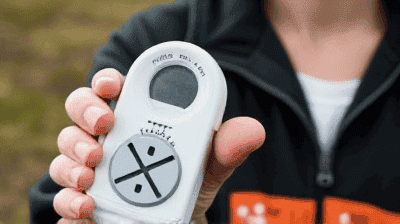
Air quality has become a pressing public health concern, particularly given the increasing pollution levels in urban areas and the known health impacts of poor air quality. While various governmental and environmental organizations conduct air quality monitoring, there are still significant gaps in the data necessary for understanding local conditions. In response, citizen scientists are stepping up to fill these gaps by utilizing technology to monitor air quality in their homes and communities.
Air quality refers to the condition of the air within our surroundings and is determined by the presence of harmful pollutants. Common air pollutants include particulate matter (PM), nitrogen dioxide (NO2), sulfur dioxide (SO2), ozone (O3), and volatile organic compounds (VOCs). These pollutants can originate from various sources, including vehicle emissions, industrial activities, and natural phenomena like wildfires.
Public Health: Poor air quality is linked to a range of health issues, including respiratory diseases, cardiovascular problems, and even premature death. Vulnerable populations, such as children, the elderly, and individuals with pre-existing health conditions, are at higher risk.
Environmental Impact: Air pollution also impacts ecosystems, contributing to problems such as acid rain, which can harm forests, waterways, and wildlife.
Climate Change: Many air pollutants, such as methane and black carbon, are potent climate forcers, contributing to global warming and affecting local weather patterns.
Economic Consequences: The health care costs associated with treating conditions caused by poor air quality can burden health systems and local economies.

Government agencies, such as the Environmental Protection Agency (EPA) in the United States, typically operate a network of air quality monitoring stations that track pollution levels and ensure public awareness of air quality issues. This monitoring often involves:
Fixed Monitoring Stations: These stations are strategically located in urban and industrial areas to sample air quality continuously. They provide valuable data on broader trends and compliance with air quality regulations.
Periodic Surveys: Agencies may conduct periodic surveys or studies to assess air quality in specific areas, particularly during pollution spikes or significant events, such as wildfires.
Despite the efforts of government agencies, traditional air quality monitoring has some significant limitations:
Coverage Gaps: Fixed monitoring stations are often located in limited areas, failing to capture variations in air quality across different neighborhoods or regions.
Update Frequency: Data from these stations may not be updated frequently enough to provide timely information, especially during pollution events.
Public Accessibility: While air quality data is often available, the complex information can be difficult for the average citizen to interpret.
Citizen science involves the participation of non-professionals in scientific research. In the context of air quality monitoring, citizen scientists use accessible tools and technologies to collect, analyze, and share data related to local air quality.
Filling Data Gaps: Citizen scientists can monitor air quality in locations where traditional monitoring stations are lacking, providing a more comprehensive understanding of local air pollution patterns.
Increased Data Volume: The scale of data collected by citizen scientists can significantly enhance the available information, allowing for more detailed analyses and localized studies.
Community Empowerment: Citizen science fosters a sense of community engagement. Residents become active participants in monitoring their environment, which can lead to grassroots movements for change.
Timely Information: Localized monitoring can provide real-time data on air quality, allowing for quicker responses to pollution events and public health advisories.

Advancements in technology have made air quality monitoring more accessible than ever. Citizen scientists can utilize a range of tools to collect data:
Low-Cost Air Quality Sensors: Various organizations have developed low-cost sensors that measure pollutants like PM2.5, PM10, ozone, and nitrogen dioxide. These sensors can be placed indoors or outdoors and provide real-time data that can be logged and analyzed.
Mobile Applications: Several mobile apps are designed to assist citizen scientists in monitoring air quality. These apps may track personal exposure levels, provide access to nearby monitoring station data, and allow users to report air quality readings.
Community-Based Platforms: Online platforms enable citizen scientists to upload their data, share findings, and connect with other individuals interested in air quality research.
Citizen scientists follow a systematic process when monitoring air quality:
Sensor Setup: After acquiring low-cost air quality sensors, participants deploy them in their homes or public areas for a designated period, usually several weeks.
Data Logging: Sensors collect data throughout the monitoring period. Many sensors connect to mobile apps or computers, allowing real-time tracking and logging of the information.
Data Analysis: Citizen scientists can analyze the gathered data to identify pollution patterns, peak exposure times, and correlations with specific events, such as traffic jams or industrial emissions.
Reporting Findings: Participants often share their results with local organizations, schools, or citizen science platforms to contribute to a larger dataset and foster awareness.
PurpleAir is a community-driven air quality monitoring initiative that provides low-cost sensors to individuals. The PurpleAir sensors measure particulate matter and are designed to be user-friendly, enabling anyone to participate in air quality monitoring.
Implementation:
Impact:
The Air Quality Egg is a DIY air quality monitoring project that allows individuals to build their sensors to measure pollutants like carbon monoxide, nitrogen dioxide, and particulate matter.
Implementation:
Impact:
MyAir is a mobile application that encourages citizen scientists to monitor their personal exposure to air quality pollutants. Users can report local conditions, upload data from their monitoring devices, and receive air quality forecasts based on aggregated findings.
Implementation:
Impact:

One of the main challenges of citizen science is ensuring that the data collected is accurate and reliable. Low-cost sensors may have varying levels of accuracy compared to professional-grade monitoring equipment.
Solution: To mitigate this challenge, participants can calibrate their sensors against official monitoring stations when possible. Collaborative efforts with local universities or environmental organizations can also enhance data credibility.
Many citizens are unaware of air quality issues or the importance of environmental monitoring. Creating awareness of air quality impacts is essential for fostering participation.
Solution: Local campaigns, workshops, and school programs can educate communities about the importance of air quality monitoring and empower them to take action.
While the initial excitement of citizen science projects can lead to engagement, maintaining long-term interest can be challenging.
Solution: Offering ongoing training, opportunities for data analysis, and recognition for contributions can help sustain participation over time. Organizing community events that celebrate citizen science achievements can also promote continued involvement.
Educate Yourself: Familiarize yourself with air quality issues, common pollutants, and their health effects. Many resources are available online through environmental organizations and health agencies.
Choose Appropriate Tools: Research and select low-cost air quality sensors that meet your needs. Platforms like PurpleAir or DIY kits like Air Quality Egg can provide useful information.
Set Up Your Sensor: Install the sensor in a location that makes sense, whether indoors to measure indoor pollutants or outdoors for general air quality.
Collect and Analyze Data: Monitor the data collected, looking for patterns or changes over time. Use the gathered information to inform yourself and your community.
Share Your Findings: Actively report your findings to community groups, local NGOs, and online platforms, contributing to the broader effort in understanding air quality.
Engage with Your Community: Advocate for air quality awareness at local town halls, school meetings, or community events, encouraging more residents to participate in monitoring efforts.
As air quality becomes an increasingly critical public health issue, the role of citizen scientists in monitoring and reporting air quality data cannot be overstated. By employing technology to collect and share information, individuals can help fill critical data gaps left by traditional monitoring systems, fostering community awareness and engagement.
Citizen science empowers people to take ownership of their environment, making informed decisions and advocating for cleaner air. As awareness of the health impacts of air pollution grows, the work of citizen scientists will be fundamental in driving collective action toward improving air quality and promoting public health.
By engaging in air quality monitoring, we all have an opportunity to contribute to a healthier future, where clean air becomes a reality for everyone. Join the movement today, and be a part of the solution.